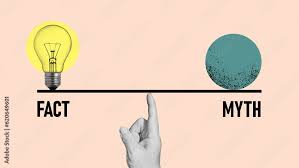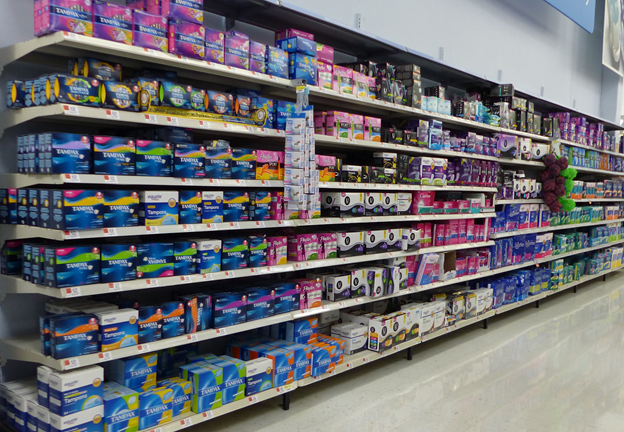What are the Pink and Tampon Taxes?
February 7, 2022
Along with the topic of sexism and gender inequality, one may have heard of the wage gap. But there is another economic gender issue that often goes unnoticed: The Pink Tax. This tax is not actually a tax but in a short explanation, it’s gender based pricing which increases the cost of products made for women, but also available to men. Everyday products that both men and women use such as body wash, shampoo, conditioner, razors and more cost more for women. Another existing tax that exists is the Tampon Tax, which is the added sales tax on women’s menstrual products. Considering the added existence of the wage gap, the Pink Tax and Tampon Tax have had a negative impact on women’s lives economically.
It is important to understand the history of work and the divide between genders. In the 19th century, women typically didn’t work. While men were out doing business-work, women’s roles in society were to take care of children at home. Men were expected to have a job capable of paying for himself, his wife and children. Prior to marriage, women might have had a small paying job, but left it once they got married. The turning point was after World War II, since there were shortages of clerical workers and labor due to men running off to fight in the war. The only people to replace them were women. Women felt that contributing to the family income to serve their families was best. A working woman was the new ideal woman for society. However, becoming part of the working class was not easy for women. At work it was not uncommon to experience sexual harassment and to be paid lower wages than men. Women experience gender discrimination in the work force through the wage gap. Statistics Canada claims that women only earn 78% of what men do. There are different factors to be considered such as experience in the field and workplace, education status, and more, but only 12% of that is accounted for on the topic of wage gap. Knowing that women experience systemic discrimination in the workplace, it makes one ask where else do they experience it and what is being done about it.
The Pink Tax is a phenomenon that upcharges products that appear to be more “feminine” but can also be sold to men. Items such as deodorant, shampoo, conditioner, razors, body wash, shaving gel, fragrances and even little girl’s toys have been put at a higher price. It is shocking knowing that not only women but little girls’ toys are costing more than boys’ toys. The New York City Department of Consumer Affairs released a report on price disparities on some brands sold throughout the city and found that goods marketed to women and girls cost more. They found that in the toys and accessories categories, toys marketed to little girls were priced 7% higher than little boys. In the personal care categories, there was an average difference of 13%. Schick Hydro cartridges were sold in a purple package and cost $18.49, while cartridges sold in a blue package cost only $14.99. The most shocking statistic that the NYC Department of Consumer Affairs found is that the same hair care products used by men cost on average 48% more if it’s a woman’s hair product. Another example is in Target’s brand Up & Up selling laxatives and ear plugs. A green box of laxatives with 25 pills sold for $1.49 while right next to it a pink box of laxatives labeled “woman’s laxatives” with also 25 pills sold for $3.69. The exact same amount of pills and milligrams per pill, yet the woman’s laxatives cost $2.20 more. The same thing happened with Up & Up’s ear plugs. However ,14 regular ear plugs cost only $4.59, while the 12 women’s purple ear plugs cost $5.70. Despite the women’s ear plugs containing a lower amount of earplugs, the pack still cost more. Whether the upcharging of prices range from 6%-13% or skyrocket to as high as 48%, there is undeniable evidence of the Pink Tax.
The Pink Tax is not the only tax costing women to pay more than they should need to each year. Introduce the Tampon Tax which is actually a tax, unlike the Pink Tax. It is the added sales tax of feminine hygiene products such as pads, liners, tampons and cups. Menstruation is not optional for women and neither is buying feminine hygiene products. Considering only women need to purchase menstrual products, the tax unreasonably targets them. These products are a necessity and not a luxury item, so why are they being taxed? States can choose to exempt certain products from taxes, and while 23 states in the US have these products tax free, 27 do not. Weiss Wolf, author of Periods Gone Public: Taking A Stand for Menstrual Equity researched what items are tax exempt in each state. For example in Florida, marshmallows are tax exempt and in Indiana, sunflower seeds are exempt.
The Pink Tax and Tampon Tax cause women to pay a lot more money than needed over time and women across the world are angry. In the UK, Paula Sherriff quoted a 2012 research done by Development Economics during a meeting with the British Parliament which explained that women would pay $291 or 200 pounds more every year for consumer products. An organization, called AxthePinkTax, said that women pay a whopping $1,351 more annually. Paying $4 more for a razor may not seem that bad at first, but knowing that the costs could rack up for women to pay almost $300-$1,351 more annually is shocking. That still may not seem like a lot to one woman, but for another it could really hurt them economically. These taxes are hurting women in prison, homeless women, women in college and women with low incomes. If women were not being hurt economically by these taxes, there would not be so much protest against it. On October 19th, 2021 the first National Period Day rally was held in Dallas, and groups used the protest to provide information on providing menstrual products on school campuses.
Luckily, action is being taken in order to get rid of gender-based pricing. For example, the New York City Department of Consumer Affairs had issued approximately 250 violations to dry cleaners and salons who overpriced women over the past two years in 2016. In 1995, California became the first state to outlaw gender based pricing. In 2015, 24 states made pads and tampons exempt from sales tax. California, Florida, Illinois, New York and Connecticut have made menstrual products fully tax exempt. However, this leaves 26 states with sales tax still on pads and tampons and 45 states that aren’t tax exempt.
Across the world there has been more progress in ditching the Tampon Tax. In 2004, Kenya left behind the sales tax on tampons and pads and have distributed menstrual products in school. In 2015 in Canada and 2020 in Australia they also got rid of the services and goods tax. The United Kingdom has completely eliminated the Tampon Tax and are in the process of putting it into place. These countries have paved the way for a supportive future for women. They have provided an example to help aid other countries in also ditching the Tampon Tax. Hopefully, the United States will do the same. With anticipation, women will also hope for the recognition of the Pink Tax and the act of ditching this tax as well.
The Pink Tax and Tampon Tax affect women negatively by disproportionately making them pay more for everyday goods used by both men and women along with taxing them for menstrual products, despite menstruating being a necessary and natural process and menstrual products being a necessity. These taxes unnecessarily take money out of the wallets of homeless women, women in schools and women with low incomes who could be using it to support themselves and their families. Women should rally and spread the word on these taxes in hopes for them to be eliminated in order to provide an economically fair and supportive future for all.
Fellers, Eson. “Pink Tax Causes Women to Pay More Over Lifetime.” University Wire, Oct 24, 2019. , https://explore.proquest.com/elibrary/document/2308288768?accountid=51943.
Jones, Charisse. “Women forced to pay a pink tax.” USA Today, March 15, 2016, 05B. Gale In Context: Opposing Viewpoints (accessed December 8, 2021). https://link.gale.com/apps/doc/A446331186/OVIC?u=nysl_li_erjs&sid=bookmark-OVIC&xid=c90016c2.
Kottasova, Ivana.”‘Pink tax’ angers women from New York to London.” CNN Wire, February 3, 2016. Gale In Context: Opposing Viewpoints (accessed December 8, 2021). https://link.gale.com/apps/doc/A442170705/OVIC?u=nysl_li_erjs&sid=bookmark-OVIC&xid=3ad65f40.
Matthaei, Julie A. “Gender and Work.” In The Oxford Encyclopedia of American Business, Labor, and Economic History, edited by Paul S. Boyer. Oxford University Press, Inc., 2013. https://search.credoreference.com/content/entry/oupoblae/gender_and_work/0?institutionId=10428.
Wakeman, Jessica. “The Real Cost of Pink Tax.” Healthline. August 06, 2020. Accessed December 09, 2021. https://www.healthline.com/health/the-real-cost-of-pink-tax#The-pink-tax.
Beauchesne, Eric. “Study blames women’s wage gap on `systemic discrimination’; (study blames wage gap on `systemic’ bias — FINAL): [EARLY edition]”. Edmonton Journal, Mar 29, 1995. (accessed January 13, 2022) https://www.proquest.com/newspapers/study-blames-womens-wage-gap-on-systemic/docview/252137400/se-2?accountid=51943.



























Ms. Perrone • Mar 20, 2022 at 5:44 pm
Reading about the tampon tax was both interesting and disheartening. After reading your article, I had to look up which states do not tax these products! You did an excellent job with this article, Isabelle!